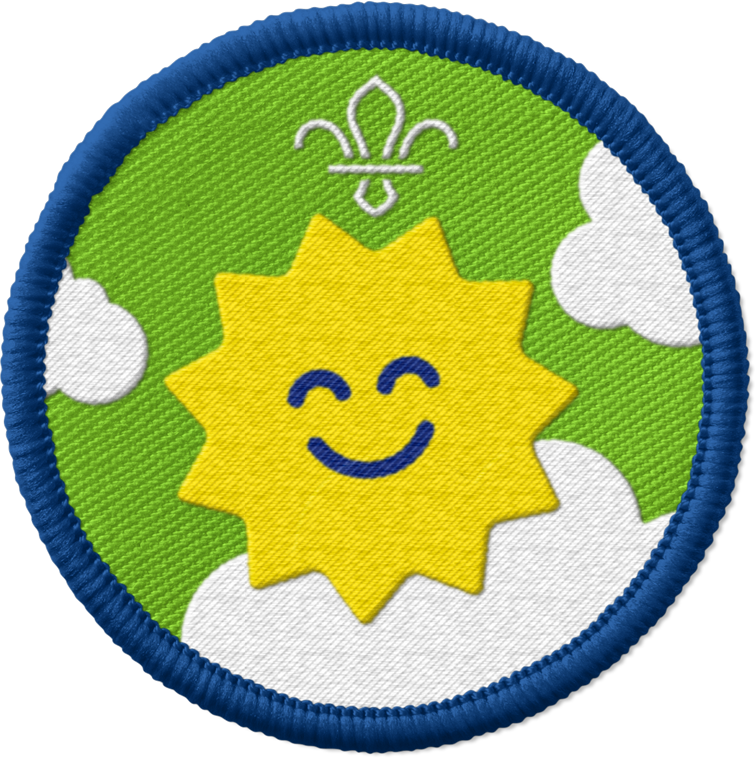
Wild builders
You’ll need
- Access to water
- Chairs
- Broom handles
- Big pieces of card
- Rope
- Paper cups
- Blankets
- Boxes
- Tarpaulin
Before you begin
- Make sure that you’ll have enough helpers for each smaller group to have an adult with them. You may need some parents and carers to help out if you’re short on adults.
Story time
- Everyone should sit in a circle.
- Someone should read The Hedgehogs and their Broken Nest by Chris Allerton. This story is about working together and helping your friends.
- After reading the story, everyone should take some time to reflect on it as a group. We’ve included some questions to help you reflect in the pink box below.
Henry and Humbert were large spikey hedgehogs, who lived at the bottom of a large acorn tree in the woods. Their favourite place to hide and stay safe was in their cosy nest, made up of dried leaves and sticks.
They were brown, which helped them to blend in on the floor of the woods.
They lived with their little albino hoglet, called Harvey. Henry and Humbert had found Harvey all alone in the woods. He was scared because his white fluffy face, white paws and shiny white spines meant he could not hide form Fang the fox.
The hedgehogs’ nest kept Henry, Humbert, and Harvey warm and safe together.
One night, a wild storm hit the woods. The wind shook the trees and the rain pounded on the ground. Thunder boomed and lightning shone bright, keeping the animals awake.
When the sun rose after the long night, the animals came out of their homes to find parts of the wood flooded with water, and sticks and leaves flung everywhere by the wind.
Worst of all was the hedgehog’s home.
The rain had washed away all the dried leaves, and the wind had shaken the sticks apart. The nest was gone: all that was left were the three hedgehogs curled in a ball together.
Henry and Humbert were very worried. Without their nest they could not keep little Harvey safe.
The other woodland animals saw the hedgehog family’s problem and wanted to help.
Olga the owl flew high to keep watch for Fang the fox.
Savannah and Stefan, the two squirrels who lived in the tree, climbed up high. They snapped strong sticks, ripped off fresh leaves, and knocked acorns off the branches so they all fell to the woodland floor.
Miguel, Manuel and Maximus, the three mice brothers who lived in a burrow under the tree, collected the leaves, sticks and acorns as they fell.
Slowly, with the help of all their friends, the new nest took shape.
Sticks and leaves were piled together to create walls with no holes. Acorns weighed down the roof so that it would not leak in the rain or blow away in the wind.
Fresh leaves were scattered inside to create a cosy dry floor, where the hedgehogs could cuddle together, sheltered and safe.
The hedgehogs were very happy that night. They all went to sleep in their new home, knowing they could continue to keep little Harvey safe.
By Chris Allerton
Go on a material hunt
- Everyone should split into groups of four or five. An adult helper should join each small group.
- Each group should choose a group name. It could be linked to a theme they’d like to use when they build their den, one of the places Sally makes a house in the story, or something totally random.
- The person leading the activity should introduce the challenge: each group will build a den that will protect them from the wilderness.
- Each group should think about what materials might be good for building a den. Where might they find these materials?
- The person leading the activity should show everyone a safe space where they can look for den-building materials and build their dens.
- Each team should start searching for building materials.
Build together
- Each team should choose a team leader who will support the team to build the den and help everyone find their role.
- The person leading the activity should tell everyone how long they have to make their dens.
- The teams should decide how to build their dens. They should think carefully about which materials they should put at the base and which materials should go on the top to make a roof for their den.
- The teams should get stuck in and spend some time making their dens the best they can be.
Take the weather challenge (optional)
- Everyone should talk about what might happen to their dens if the weather was windy or rainy.
- Each team should decide if they want to test their den with some pretend weather.
- The person leading the activity could use a piece of cardboard to fan a den as hard as they can to see if it’s windproof.
- The person leading the activity could pour some cups of water over a den to see if the inside would stay dry in the rain.
- Everyone should chat about how well their dens managed in the wind or rain. Could they have done anything differently to make them more weatherproof?
Reflection
This activity encouraged everyone to use their communication and teamwork skills to reach a common goal – building a den. The activities supported everyone to think about who could step up and take the lead, and what good leaders do.
You could talk about the reflection questions below throughout the session or at the end.
The Hedgehogs and their Broken Nest
- Why did all of the animals help the hedgehogs re-build their home?
- How do you think the animals felt after helping the hedgehogs?
Go on a material hunt
- Who was the leader in each group? Why were they the leader?
- Did every group work as a team?
Building together
- What weather were people trying to demonstrate when they fanned the den with the cardboard?
- What weather were people trying to demonstrate when they poured water on the den?
- Which shelter was the best? Why was it the best?
Safety
All activities must be safely managed. You must complete a thorough risk assessment and take appropriate steps to reduce risk. Use the safety checklist to help you plan and risk assess your activity. Always get approval for the activity, and have suitable supervision and an InTouch process.
- Animals and insects
Be aware of the risks before interacting with animals. Be aware of anyone with allergies, and make alternative arrangements for them.
- Poles and long objects
Be careful when moving poles or long items. Take care if the ends are sharp. Have appropriate supervision for this activity.
- Heavy and awkward objects
Never lift or move heavy or awkward items alone. Ask for help or, if possible, break them down into smaller parts.
- Rubbish and recycling
All items should be clean and suitable for this activity.
- You could give everyone their den materials to make the task easier and quicker.
- It’s up to you how much support the adults in each group give. They should change the level of support they give depending on how the group finds the activity.
- You don’t have to do the weather challenge. If you have time (and the young people want to give it a go), it can be fun – but some groups may want to focus on spending time creating dens together.
- Make sure everyone can help gather den building materials. If you think anyone’s likely to find it tricky, you could gather materials in advance, or a few people from each group could stay with their group’s materials and start planning their den’s design.
- Make sure everyone has the chance to get stuck in. Remind everyone that the aim of this activity is to work together as a team – building the den isn’t the only goal! If you need to, you could get creative to make sure everyone has a role to play (for example, if some people would find it difficult to help move big pieces of material or reach the top of the den, they could direct other people so their ideas are still heard).
All Scout activities should be inclusive and accessible.
Everyone could use their new skills to try to teach someone else how to build a den. What instructions would they give? How could they show good leadership skills?
It’s OK if things don’t go to plan and the dens fall apart or get a bit soggy! If a team’s den goes wrong, encourage them to get back up, try again, and think of ways they could fix their creation.

